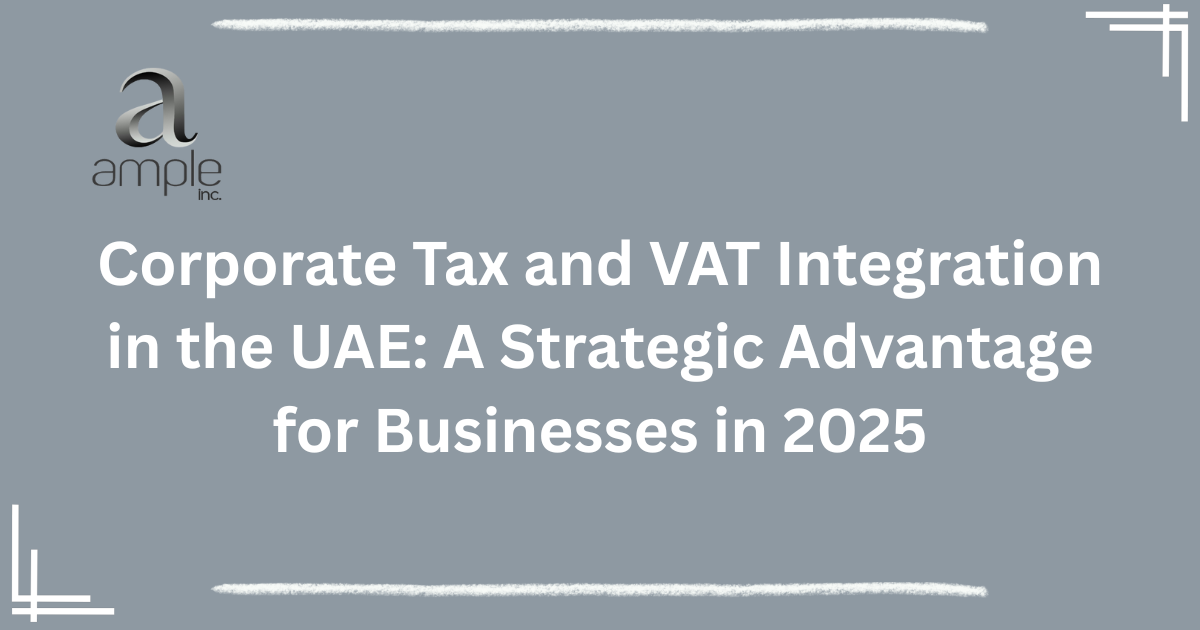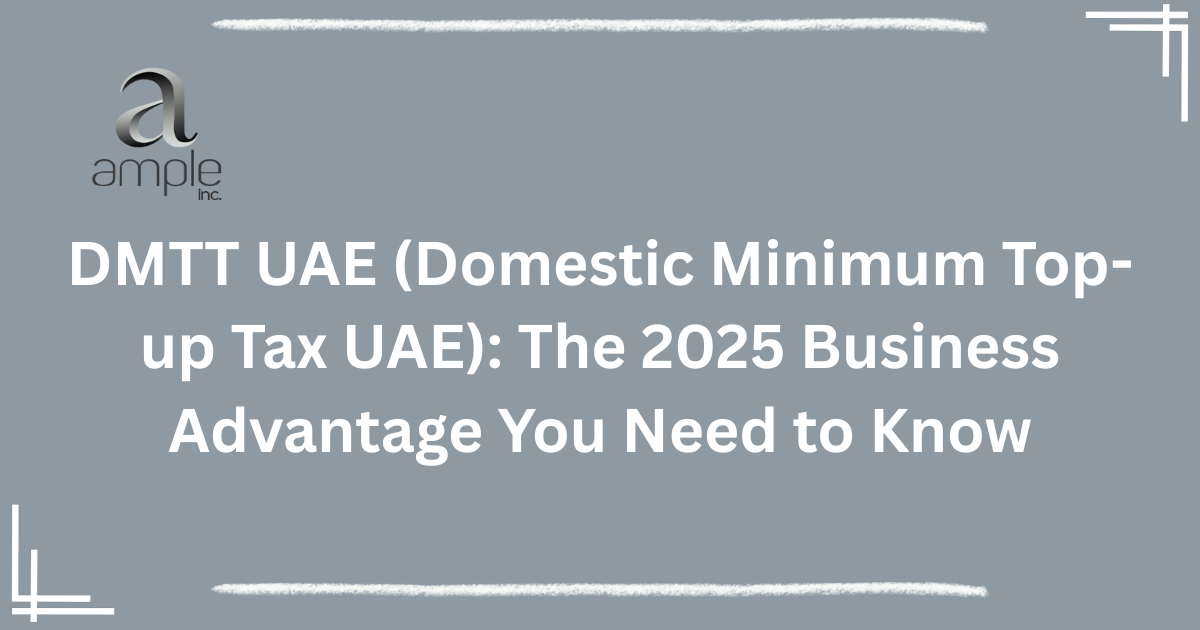Introduction why DMTT matters for UAE groups
The UAE’s introduction of a Domestic Minimum Top-up Tax (DMTT) is a major tax policy step for multinational enterprises operating in the Emirates. Designed to align the UAE with the OECD/G20 Pillar Two framework, the DMTT ensures that large multinationals pay at least a 15% effective tax rate (ETR) on profits arising in the UAE. For many groups, this creates a new compliance and planning layer on top of existing corporate tax obligations, and it changes how group tax footprints are managed globally. uae domestic minimum top up tax
For UAE-based constituent entities (CEs) in large MNE groups, DMTT can generate a domestic top-up charge where the effective tax rate for the CE falls below the 15% threshold. The rule applies to MNEs above the global revenue threshold (detailed below), and its effective starting point in the UAE is fiscal years beginning on or after 1 January 2025.
This guide is written for CFOs, tax directors, finance teams and in-house counsel at groups with a UAE presence. It provides practical steps to calculate, report and where possible mitigate DMTT exposure while staying fully compliant with UAE law.
Pillar Two recap: the global minimum tax architecture
Pillar Two (often referred to as the OECD “GloBE” rules) aims to prevent a “race to the bottom” in international corporate tax competition by setting a global minimum effective tax rate of 15%. The multilateral framework has two primary mechanisms:
- Income Inclusion Rule (IIR): allows a parent jurisdiction to top up the effective tax rate on low-taxed foreign subsidiaries owned by the group.
- Undertaxed Profits Rule (UTPR): allocates top-up tax to jurisdictions where the low-taxed profits are located if the IIR is not applied.
A third domestic approach used by many jurisdictions and the one the UAE adopted is the Domestic Minimum Top-up Tax (DMTT). Instead of relying primarily on IIR or UTPR, a DMTT allows a jurisdiction to preserve taxing rights by applying a top-up tax at the local level where the shortfall exists. See OECD guidance for the overall architecture and the options jurisdictions can adopt.
UAE’s DMTT legal basis and timeline
What the UAE implemented: The UAE introduced DMTT via Cabinet Decision No. (142) of 2024 and complementary ministerial guidance. The rules became effective for fiscal years starting on or after 1 January 2025. The UAE’s approach implements the domestic top-up as the primary mechanism (the UAE is not implementing the IIR/UTPR as its first line; rather the DMTT ensures the UAE can collect any residual top-up directly).
Official MoF resource: The UAE Ministry of Finance (MoF) publishes the UAE DMTT overview and FAQs on its website, which should be treated as the primary source for compliance obligations and procedural guidance. Practical rules on scope, computation and filing have been set out in the Cabinet Decision and MoF guidance.
Effective date: Fiscal years beginning on or after 1 January 2025 (groups must therefore assess FY2025 exposures).
Why it matters now: Many multinationals’ finance teams traditionally relied on low or zero tax in UAE jurisdictions; DMTT removes that certainty for large groups. Even if a UAE CE nominally pays little to no corporate tax, DMTT can cause a domestic top-up if the CE’s effective tax rate (after considering covered taxes and adjustments) is below 15%.
Who is in scope: MNE thresholds, constituent entities, and exclusions
Group threshold (turnover test): The Domestic Minimum Top-up Tax applies to MNE groups where the consolidated revenue of the Ultimate Parent Entity (UPE) equals or exceeds €750 million in at least two of the four preceding financial years. This mirrors the GloBE threshold used by the OECD.
Constituent Entities (CEs): A UAE Constituent Entity is any entity that is resident or created under UAE law and that forms part of an MNE group meeting the threshold. Where a UAE CE’s effective tax rate falls below 15%, the DMTT will seek to top up the difference at the domestic level, subject to the detailed computation rules.
Key exclusions / carve-outs (high level):
- Investment entities: in many jurisdictions, pure investment entities may be excluded the UAE rules identify certain investment entities that will not be subject to top-up tax. Check the MoF guidance for exact definitions and exclusions.
- Stateless entities and reverse hybrids: special rules apply (these often receive specific treatment under Pillar Two).
Special cases: Joint ventures, entities with related-party arrangements and entities that form part of an ownership chain need careful mapping because of the way the ETR is calculated and how taxes are credited/allocated.
How the Domestic Minimum Top-up Tax is calculated top-up mechanics and ETR tests
Understanding the computation is the technical core of Domestic Minimum Top-up Tax readiness. The key steps are:
Step A Determine Pillar Two Income (GloBE basis)
Start from Pillar Two Income or Loss, adjusted covered taxes the rules define the tax base (GloBE income), permitted adjustments, and the treatment of exclusions and losses. These are not identical to domestic taxable income; they follow the GloBE computation rules (adjustments, add-backs, excluded items).
Step B Compute Effective Tax Rate (ETR)
For each UAE CE, compute the ETR as (Covered Taxes / GloBE Income) for the relevant period. Covered Taxes are taxes that meet the GloBE definition (i.e., taxes that are similar to corporate income tax and meet certain criteria). If the CE’s ETR < 15%, there is a “shortfall.”
Step C Top-up amount
The top-up is the difference between 15% and the CE’s ETR, applied to the relevant adjusted covered income to generate the top-up amount. The Cabinet Decision provides exact mechanics and rounding, and also sets out ordering rules if multiple taxes are involved.
Step D Group allocation and reliefs
If an IIR or UTPR were applied elsewhere in the group, the DMTT must account for amounts already collected or credited. The UAE has chosen DMTT as the mechanism to collect the top-up locally; however, reliefs can apply if other mechanisms have already neutralized the shortfall elsewhere. The MoF guidance explains the credits and ordering rules.
Important practical point: Covered Taxes must be supported by documentary evidence. Low or zero nominal tax does not automatically mean zero covered taxes the GloBE rules define which taxes qualify (and tax credits available in a CE’s computation).
Interaction with IIR, UTPR and foreign taxes
The UAE’s Domestic Minimum Top-up Tax sits in the global Pillar Two design; therefore, you must understand interaction with IIR and UTPR:
- Primary collection via DMTT: The UAE has introduced the Domestic Minimum Top-up Tax as its primary tool. This means the UAE can collect any top-up domestically on UAE CEs.
- IIR/UTPR considerations: The choice of Domestic Minimum Top-up Tax affects how other jurisdictions apply IIR or UTPR. If a foreign jurisdiction applies an IIR on the same group, coordination and crediting rules will determine which jurisdiction collects the top-up and how double collection is avoided. Groups must model the group-wide outcome carefully.
- Foreign tax credits & double tax: The Domestic Minimum Top-up Tax calculation considers covered taxes paid in the UAE and may grant credits for certain taxes already paid elsewhere consistent with Pillar Two ordering rules. Practical complexity arises when different constituent entities have differing tax profiles and when withholding taxes, reduced tax rates or incentives exist.
Bottom line: DMTT changes the landscape from being purely domestic tax compliance to embedding the UAE site within a global group-level model. Multinational tax teams must coordinate data flows, tax bases and covered tax evidence globally.
Reporting, filing and payment: what UAE constituent entities must do
The UAE MoF guidance sets out reporting obligations and procedural steps for Domestic Minimum Top-up Tax compliance. These commonly include:
- DMTT registration and identification (for groups meeting threshold): groups will need to identify UAE CEs and ensure MoF has the required group-level information.
- Filing of DMTT returns with the MoF / Tax Authority: the MoF published procedural details and timelines; expect annual returns aligned with the CE’s fiscal year.
- Supporting documentation: GloBE calculations, covered taxes reconciliation, group-level data, UPE consolidated revenue proof and audited financial statements.
- Payment timeline: top-up taxes arising under DMTT typically become due within the filing timetable (MoF guidance defines payment date). Groups should expect domestic payment obligations for UAE CEs.
Practical compliance tip: Early engagement with the MoF or your UAE tax advisor to confirm filing formats and attachments is essential. Systems integration (ERP, tax engines) must be upgraded to generate the GloBE-compliant reporting pack.
Practical compliance checklist 12 steps for readiness in 2025
- Confirm Group Threshold: Check whether the group’s consolidated revenue ≥ €750m in 2 of the prior 4 years. If uncertain, compute conservatively and prepare to comply.
- Map UAE Constituent Entities: Create a register of all UAE legal entities, branches and PEs. Identify stateless and reverse hybrid entities.
- Gather Group Financials: Secure the UPE consolidated financial statements and supporting reconciliations for the turnover threshold test.
- Assemble GloBE Data: Build the data pack (GloBE income, adjustments, covered taxes) at CE level. This is typically different from local statutory filings.
- Identify Covered Taxes: Document all taxes that qualify as “covered taxes” under GloBE rules (including UAE corporate tax paid, other similar taxes).
- Model ETRs: Run ETR calculations for each UAE CE across the relevant fiscal period(s). Flag any CE with ETR < 15% and quantify potential top-up.
- Assess Credits & Relief: Determine whether any foreign top-ups, IIR applications or UTPR allocations affect the UAE outcome.
- Plan Evidence & Documentation: Ensure tax payments, invoices, withholding receipts and legal support are archived and retrievable.
- Prepare Filing Templates: Use the MoF formats (when published) or tax engines that are Pillar Two capable.
- Engage Auditors & External Advisors: Work with external auditors or trusted tax advisers experienced in GloBE computations.
- Update Systems: Integrate Pillar Two calculations into tax provision and compliance processes (quarterly / annual simulation).
- Board & Stakeholder Briefing: Prepare executive summaries showing potential DMTT liabilities, cash flow impact and planning options for board approval.
Tax planning & restructurings: permitted strategies and red flags
DMTT introduces planning opportunities but also audit focus. Below are practical, ethical and compliant strategies, plus items to avoid.
Permissible planning strategies (examples)
- Increase covered taxes legitimately: where jurisdictions allow, ensure tax is paid in the UAE CE on eligible items (e.g., elective taxes, permanent establishment taxes) if commercially justified.
- Substantive activities & nexus strengthening: increase economic substance in higher tax locations (e.g., employ staff, book assets) so that profit allocation aligns with substance tests and reduces low-tax distortions.
- Use of tax credits & reliefs: ensure correct application of foreign tax credits and bilateral reliefs to avoid double taxation while meeting GloBE ordering rules.
Red flags to avoid
- Artificial profit shifting with no substance: arrangements that shift profit without economic rationale will draw scrutiny.
- Circular payments, hybrid mismatches: Pillar Two rules and other anti-abuse measures target mismatch exploitation.
- Reactive restructuring close to effective dates: last-minute legal restructuring can trigger challenge under anti-abuse provisions. Be proactive and well-documented.
Advisory note: Engage seasoned international tax advisors for any restructuring. The UAE MoF and tax authorities in other jurisdictions are coordinating enforcement under Pillar Two.
Example calculations (illustrative, step-by-step)
Below are simplified, illustrative examples to demonstrate computation. (Note: real calculations require full GloBE adjustments; these are for conceptual clarity.)
Example 1 Simple UAE CE with low tax
- GloBE income (CE): AED 10,000,000
- Covered taxes paid in UAE on that income: AED 500,000 (equivalent to 5% ETR)
- ETR = 500,000 / 10,000,000 = 5%
- 15% shortfall = 15% − 5% = 10%
- Top-up amount = 10% × AED 10,000,000 = AED 1,000,000 DMTT payable in UAE for that CE.
Example 2 Credit for foreign top-up collected under IIR elsewhere
- If a foreign jurisdiction applies an IIR and collects a portion of the top-up, the UAE DMTT liability is reduced to avoid double collection the exact ordering and credit mechanics are set by the MoF rules and GloBE ordering provisions. Real groups must model the group outcome to allocate credits and avoid overpayment. Read about key features of DMTT HERE PwC
Important: These simplified calculations omit many GloBE adjustments (e.g., excluded income, permanent differences, allocation rules). Use software or specialist advisors for accurate modeling.
Frequently Asked Questions (FAQ)
Q1 When does UAE Domestic Minimum Top-up Tax apply?
A: To fiscal years starting on/after 1 January 2025 for MNE groups meeting the €750m threshold.
Q2 What is the turnover threshold?
A: Consolidated annual revenue of the Ultimate Parent Entity ≥ €750 million in at least two of the four preceding financial years.
Q3 Are free zone companies excluded?
A: Not automatically. Free zone companies that are CEs and have an ETR < 15% may be subject to DMTT unless specific qualifying income rules or exclusions apply. Assess on a case-by-case basis.
Q4 How is ETR calculated?
A: ETR = Covered Taxes / Pillar Two Income (GloBE income). The Cabinet Decision and MoF guidance set out adjustments.
Q5 Will UAE Domestic Minimum Top-up Tax create double taxation?
A: Pillar Two ordering rules and credits aim to avoid double collection. If top-up tax is collected under another jurisdiction’s IIR, that will generally be credited. UAE rules provide ordering and crediting mechanisms.
Q6 What records should we retain?
A: Full GloBE supporting documentation, evidence of covered taxes, reconciliations between local GAAP/IFRS and GloBE basis, and UPE consolidated financials keep them for the statutory period and for audit preparedness.
Conclusion
If you are a multinational group with a UAE presence, act now. Key first-order actions:
- Confirm whether the group meets the €750m threshold.
- Map UAE CEs and gather GloBE data requirements.
- Run ETR simulations for FY2025 and forecast cash flow for potential Domestic Minimum Top-up Tax payments.
- Engage auditors and an experienced Pillar Two advisor to design controls and reporting packs.
- Integrate Pillar Two calculations into your tax provision process.
The UAE DMTT is not merely a compliance box-ticking exercise it affects pricing, cash flow, and cross-border tax strategy. Early, well-documented planning reduces surprise liabilities and ensures sustainable outcomes.
Explore More from Ample Inc
Looking for expert guidance beyond the DMTT UAE (Domestic Minimum Top-Up Tax)?
At Ample Inc, we provide complete financial and business support to keep your company compliant and future-ready. Check out our key services below:
- Corporate Tax Filing & Registration in UAE Hassle-free tax filing on the EmaraTax portal with tailored strategies for Free Zone and Mainland companies.
- VAT Advisory & Filing Services Simplify your VAT compliance with our expert team.
- Accounting & Bookkeeping Services Accurate financial reporting and professional accounting for SMEs and large enterprises.
- CFO & Finance Resource Solutions On-demand CFO support, budgeting, and financial management.
- FinTech & Automation Services Digital finance transformation and business process automation tailored to your needs.
Ready to ensure full tax compliance before the upcoming deadlines?
Book a Free Consultation with our experts today!



